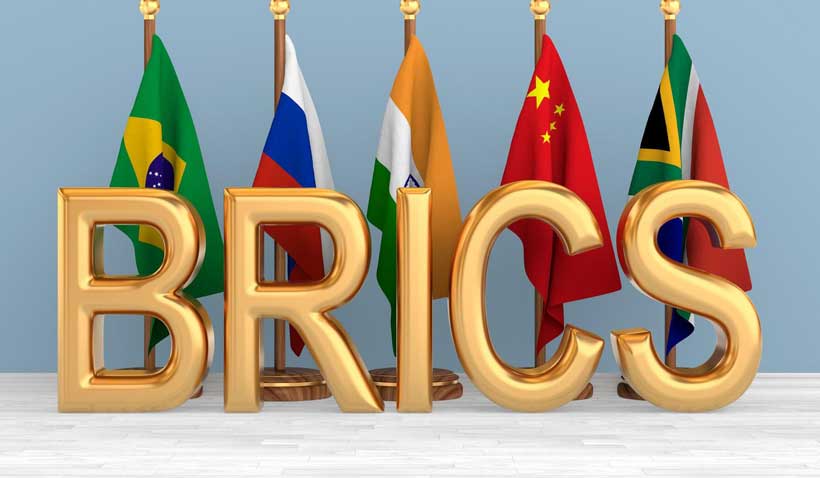by Mike Maharrey, Gold Seek:

In an interview on the Russian news agency TASS, Kremlin aide Yury Ushakov announced that the BRICS nations plan to develop a new payment system based on the blockchain.
This sets the stage for further de-dollarization and could further undermine the status of the dollar as the global reserve currency.
“We believe that creating an independent BRICS payment system is an important goal for the future, which would be based on state-of-the-art tools such as digital technologies and blockchain.”
Ushakov said the system should be convenient for governments, businesses, and common people to use, “as well as cost-effective and free of politics.” And significantly, without dollars.
TRUTH LIVES on at https://sgtreport.tv/
“Work will continue to develop the Contingent Reserve Arrangement, primarily regarding the use of currencies different from the U.S. dollar.”
Ushakov didn’t provide any details about the plan, but he said the BRICS bloc remains committed to increasing its role in the international monetary and financial system.
BRICS is an economic cooperation bloc originally made up of Brazil, Russia, India, China, and South Africa. As of Jan. 1, 2024, the bloc expanded to include Saudi Arabia, Egypt, the UAE, Iran, and Ethiopia.
More than 40 other nations have expressed interest in BRICS membership.
The expanded BRICS has a combined population of about 3.5 billion people. The economies of the BRICS nations are worth over $28.5 trillion and make up roughly 28 percent of the global economy. BRICS nations also account for about 42 percent of global crude oil output.
The BRICS countries have expressed a desire to move away from dependence on the dollar. During last year’s BRICS summit, Brazil President Luiz Inacio Lula da Silva called on the bloc to create a common currency for mutual trade and investment. He said a BRICS currency would “increase our payment options and reduce our vulnerabilities.”
BRICS nations have already made moves to move away from the dollar. Last April, China and Brazil announced a trade deal in their own currencies, completely bypassing the dollar. Under the deal, Brazil and China will carry out trade directly exchanging yuan for reais and vice versa instead of first converting to dollars.
Last summer, India and the United Arab Emirates also settled an oil trade without converting local currencies to dollars for the first time, as India’s top refiner made a payment for oil in rupees.
A BRICS payment system could speed the move away from the dollar.
Currently, most global trade moves through the Society for Worldwide Interbank Financial Telecommunication (SWIFT) system.
SWIFT serves as the global economy’s superhighway. In effect, it operates as a global financial messaging service, facilitating cross-border payments. As the SWIFT website puts it, “SWIFT is the way the world moves value.”
Since the dollar serves as the world reserve currency, SWIFT effectively facilitates an international dollar system.
But a lot of countries aren’t comfortable with the U.S. maintaining that kind of economic clout and a more diversified system. Before last year’s BRICS summit, the bloc’s South African ambassador Anil Sooklal said, “The days of a dollar-centric world is (sic) over. That’s a reality. We have a multipolar global trading system today.”
The Ramifications of De-Dollarization
BRICS’s growing economic power poses a direct threat to dollar dominance. In fact, during last year’s summit, BRICS leaders emphasized conducting increased trade within the bloc using local currencies as part of a move towards de-dollarization, with a stated goal of reducing the U.S. dollar’s dominance in global trade and finance.
This isn’t just about a geopolitical power play. Any erosion of the dollar’s status could have significant economic ramifications for the average American.
Because the global financial system runs on dollars, the world needs a lot of them, and the United States depends on this global demand to underpin its profligate borrowing and spending. The only reason the U.S. can borrow, spend, and run massive budget deficits to the extent that it does is the dollar’s role as the world reserve currency. It creates a built-in global demand for dollars and dollar-denominated assets. This absorbs the Federal Reserve’s money creation and helps maintain dollar strength despite the Federal Reserve’s inflationary policies.




